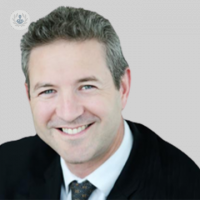Understanding tummy tucks: Your guide to procedures and recovery
Autore:In his latest online article, Mr Charles Durrant gives us his insights into a tummy tuck. He talks about what it is, the typical reasons to consider this procedure, how its performed, available techniques, results, risks, complications and the recovery process.

What is a tummy tuck, and what are the typical reasons for considering this procedure?
A tummy tuck describes a range of operations performed on the abdomen. The common feature of these operations is to remove excess skin and fat and to improve the abdominal silhouette. There are a number of reasons why a patient may look into having a tummy tuck. Pregnancy, weight loss, or just the results of time and gravity can result in excess skin, fat or both. In addition to this, pregnancy or extra visceral fat (fat around the intestines) may cause the rectus muscles of the anterior abdominal wall to separate in a condition called rectus diastasis. Not only can this cause weakness of the core muscles, leading to back pain and a loss of definition in the waist but it can also cause the intestines to push through the space between the muscles as a ventral hernia which can cause unsightly bulging and functional difficulties due to a decrease in strength of those muscles being unable to work in a straight line.
How is a tummy tuck surgery performed, and what are the available techniques, such as full vs. mini tummy tucks?
The choice of tummy tuck procedure depends largely on the distribution of excess skin and fat, as well as the extent of muscle separation. The most straightforward option is the mini-tummy tuck, which targets the skin, fat, and muscle below the belly button. It is suitable for individuals satisfied with their upper abdomen but seeking improvement in the lower abdomen and mons area. This approach minimises scarring and recovery time, omitting a scar around the belly button. However, its effectiveness is limited to addressing the area below the belly button and just above the pubic region, making it suitable for slimmer patients with specific concerns, such as post-Caesarean section overhang.
In contrast, the full tummy tuck encompasses the benefits of the mini-tummy tuck but also addresses excess skin and fat above the belly button and any muscle separation along the entire rectus muscle length. This comprehensive procedure is powerful, ideal for patients with vertical excess both below and above the belly button or muscle separation extending to the ribcage. For cases with horizontal excess, common in significant weight loss patients, a standard tummy tuck may be insufficient. The Fleur-de-Lis tummy tuck becomes relevant in such scenarios, removing a vertical wedge of skin to reduce horizontal laxity. While this technique effectively targets both vertical and horizontal excess, it comes with the trade-off of an additional vertical scar from the pubic area up to the ribcage.
More advanced techniques, such as the reverse tummy tuck for upper abdominal excess and circumferential tummy tuck for excess around the flanks and bra line, can be combined with a standard tummy tuck or Fleur-de-Lis for enhanced skin removal and silhouette definition. These procedures can also be complemented with various types of liposuctions to further optimise the overall results.
What can I expect in terms of results from a tummy tuck, and is it a permanent solution?
The best results from any type of tummy tuck are seen in patients who have more skin and less fat. It is important to reach a sustainable target weight before having surgery to maximise the results. It is also important to understand that it may not be possible to reach the result a patient has in their mind due to the limitations of any surgery. However, by choosing the correct procedure and choosing an experienced and qualified surgeon, the improvements can be quite dramatic and, in some cases, completely life-changing. If weight is kept stable, there is no reason that the results from a tummy tuck should not be long lasting and the majority of patients will never need a second tummy tuck operation.
Are there potential risks or complications associated with tummy tuck surgery?
Like all surgeries, a tummy tuck has some risks. The chance of bleeding afterward is very low (less than 1%). Getting minor infections that need antibiotics for a bit of redness isn't uncommon, but serious infections that need hospital stay or more surgery are thankfully very rare. Scarring is a bit unpredictable. Most people end up with faint scars after about a year, but they can sometimes get raised or discoloured, and that often depends on genetics. Healing can vary in different parts of the wounds, but with proper care, it's usually manageable and rarely leads to needing more surgery.
Before, fluid collections under the skin (seromas) were a common issue with tummy tucks. But now, with better surgery techniques (no suction drains, using internal stitches, and compression garments), the chances of seromas have gone down. Serious problems like blood clots in the legs or lungs are really rare. It's important to stay active, wear compression stockings, and stay hydrated after surgery to lower the risk. Some patients at a higher risk of blood clots might be given blood-thinning meds for a few days to minimise that risk.
What is the recovery process like after a tummy tuck, and are there any post-operative tips?
Following any type of tummy tuck, it's crucial to stay active and stay well-hydrated to promote smooth blood circulation. Using compression garments for six weeks post-surgery is important, as is avoiding activities that strain the core muscles to protect the muscle repair. Expect some hunching over during the first week as the skin adjusts. Typically, driving and returning to office-based work are feasible after two weeks, but engaging in more physical tasks, especially heavy lifting and core exercises, should be postponed for six weeks. If flying, it's possible within Europe after two weeks and outside of Europe after four weeks, with the recommendation to wear compression stockings and stay active and hydrated during the flight. It's advisable to stay close to your surgeon during the initial six weeks for quick identification and management of any potential issues.
Mr Charles Durrant is an esteemed consultant plastic surgeon. You can schedule an appointment with Mr Durrant on his Top Doctors profile.


